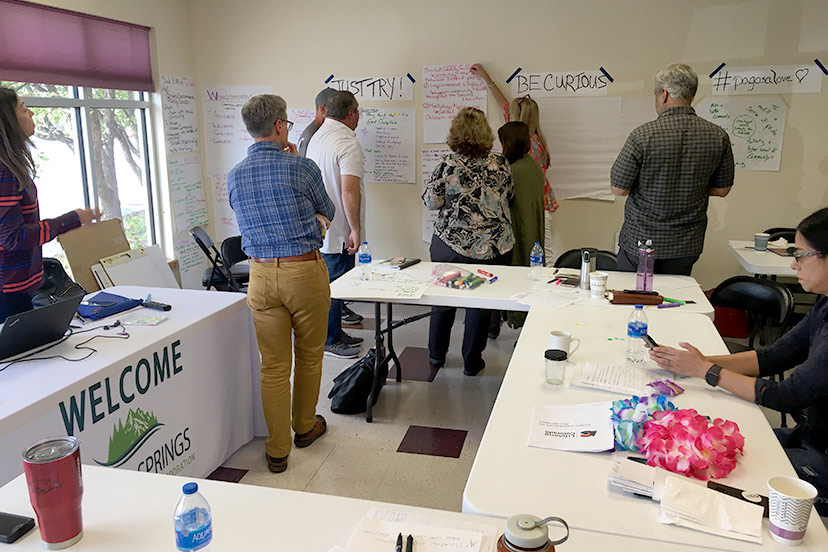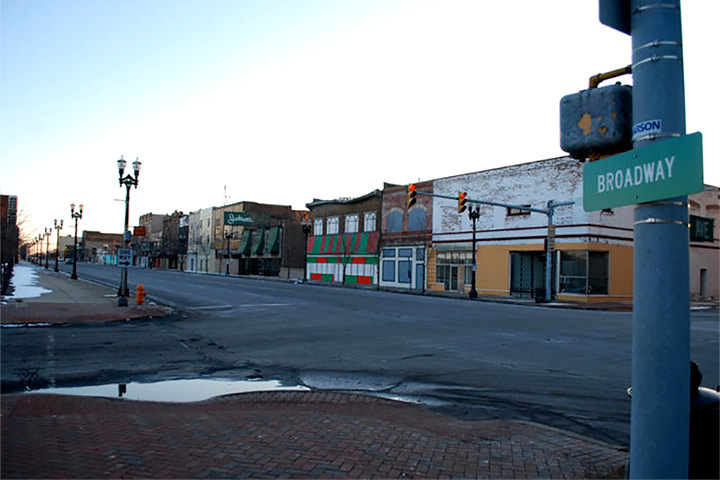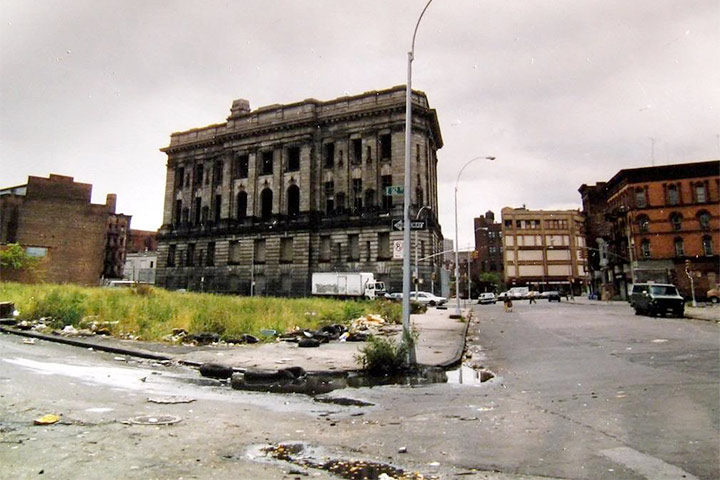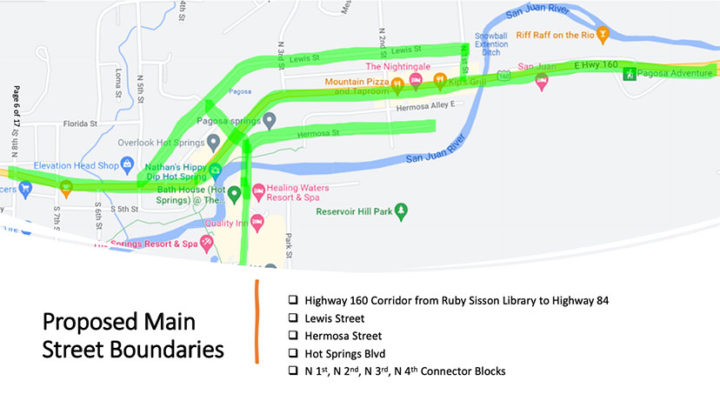The photo above shows members of the new ‘Main Street Advisory Board’ using adhesive dots to indicate the work they’d most like to see their board engage in, going forward. The day-long work session on September 8 was facilitated by Denver consultant Melissa Antol, a Senior Manager with hrQ Inc.
The volunteer Board members, as appointed by the Town Council, are:
Jeff Posey, Town Council member
Cindy Schultz, Town Planning Manager
Rosanna Dufour
Robert Melun
Barbara Swindlehurst
Jeremy Martin
Rose Chavez
Haz Said
Rick Holter
Anne-Marie Sukcik
Also in attendance at the September 8 meeting was Town’s Community Development Director James Dickhoff, presumably filling in for Town Planning Manager Cindy Schultz, who was absent during the portion of the work session I attended.
As mentioned in Part One, the Colorado Department of Local Affairs manages the federal Main Street America™ program within our state, in terms of handing out the grants and supplying technical assistance. But the program has been around since 1980, and the National Trust for Historic Preservation has developed a model that steers fairly clear of federal mandates imposed by bureaucrats in Washington DC. Instead, the essential planning and implementation of the program is left to people living in the actual community — the local Main Street Advisory Board, made up of volunteer residents, and the local municipality, which, here in Pagosa, would include the Pagosa Springs Town Council and its paid staff.
The process I witnessed on September 8, led by facilitator Melissa Antol, seemed to be aimed at establishing some basic priorities.
If the Town of Pagosa Springs were to become a ‘Graduate’ Main Street Community, and had access to grants and training and technical assistance from the Colorado Main Street Program, what changes and improvements would the Town want to bring about?
I shared a couple of photos yesterday in Part Two, that were not taken in Pagosa Springs.
These isolated photographs, which I found online, were intended to indicate the conditions prevailing in certain sections of certain U.S. cities, where the existing buildings, streets, neighborhoods, and social conditions discourage private investment and negatively impact the economic success of the local residents— and also, discourage the preservation of historical buildings.
We do not have conditions anywhere close to this in our downtown business district. Quite the opposite, in fact.
Presumably, these photos portray the kinds of neighborhoods that the federally-chartered National Trust for Historic Preservation wanted to address, when they created the Main Street America™ program in 1980.
But that was 40 years ago, and if we know anything about government (and organizations in general) we’re well aware of the phenomenon known as “mission creep”.
A government agency gets created, and funded — all with the best of intentions of addressing the problems suggested by the two photos above. But these are hard problems to address. It’s easy to become discouraged.
So our bureaucrats start to look for communities that are less difficult to deal with, and pretty soon — like, say, 40 years later — they find themselves giving away federal money to fund tourist resorts. Program funding originally intended to preserve historical buildings and to help relieve significant social issues in seriously challenged core neighborhoods, gets funneled into nicer tourist amenities in towns like Pagosa Springs, where — according to my personal assessment — nearly the entire ‘Main Street’ business district has been upgraded over the past couple of decades… and where the cost of living has become the highest in the Four Corners area of Colorado.
On September 8, the new Main Street Advisory Board held its initial training session, where they were tasked with discussing ways to improve what might be, already, the ‘most improved’ district in the entire community.
We definitely have some economically challenged neighborhoods in Archuleta County. The area called ‘Main Street’ is not necessarily one of them.
But someone (I have no idea who) drew a map for the proposed boundaries for a district that will someday benefit from additional grants, training, technical assistance, and who knows how many hours of volunteer meetings, plus Town staff time and energy… and taxpayer money.
In my experience, dealing with the Town of Pagosa Springs, locals who have lived in Pagosa Springs for more than 30 or 40 years often feel that the map, above, indicates the “real” Pagosa Springs. The “historical” Pagosa Springs. The economic and social “heart” of Pagosa Springs.
That feeling goes hand-in-hand with the feeling that the commercial and residential areas to the west and east of the neighborhoods shown on this map are not fully a part of the Pagosa Springs community. They’re “the county”. They’re “Pagosa Lakes” and “Aspen Springs” and “Alpha” and “Down 84” and “San Juan River Village”.
The red-headed step-children of the true Pagosa.
Here’s a different map of Pagosa Springs. The pale white area indicates the boundaries of ‘The Town of Pagosa Springs’.
You can click the map for a larger version.
The yellow circle indicates the proposed Main Street district… the downtown resort area where the majority of businesses are aimed at serving tourists.
The blue ovals indicate the ‘uptown’ business areas that might be totally ignored by the Main Street Program, even though they, too, are officially within the Town of Pagosa Springs, and even though they provide the vast majority of products and services aimed at full-time residents.
The pink areas give a partial indication of where 80% of our full time residents live.
Does the Main Street Program want to completely ignore the uptown business district — the district most dedicated to serving our full-time residents?
And put all their energy into the tourist-resort-focused part of town?
These were the questions in my head when I attended the September 8 work session. I wondered if the Main Street Advisory Board would embrace the entire community…





